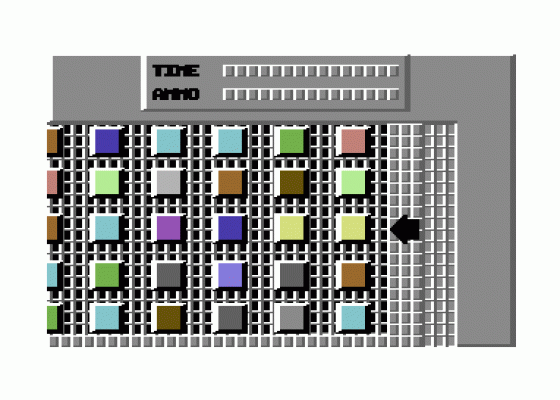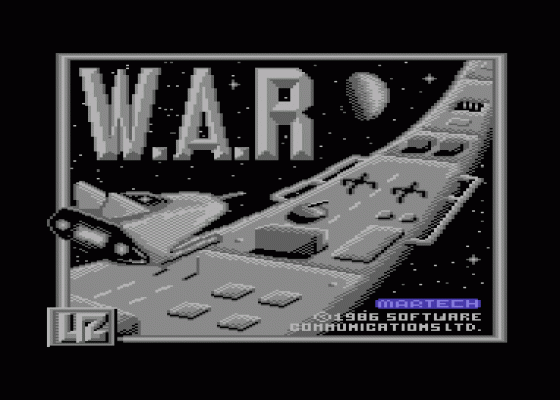
Commodore User
 1st September 1986
1st September 1986
Author: Seamus John
Publisher: Martech
Machine: Commodore 64/128
Published in Commodore User #37
W.A.R.
Uridium, Commando and Rambo have all proved that the shoot-'em-up is back in style and indeed for many gamers it never went out of style.
For what has seemed like years we've been inundated with arcade adventures. All very well if you don't have a bloodthirsty urge to commit intergalactic genocide on the nearest planet of slimey, two-headed aliens - but prancing through screen after pretty screen of Wally and his mates, or Jack The Nipper, is not, as far as most blast-'em fans are concerned, a satisfactory alternative to shooting the hell out of some earthbound alien being.
Martech's latest release, W.A.R. looked to have all the makings of a smash hit game. The glossy packaging and the imaginatively written storyline seemed to promise an excellent game centred on an attacking alien fortress which is bearing down fast on poor, old defenceless earth.

The game, unfortunately, doesn't match up to its grand introduction. It isn't actually bad - to be honest, it's quite addictive and the sound effects are some of the best I've heard on the C64. W.A.R. has just one small fault - it's almost identical to Uridium.
The actual playing area of the game looks very similar to Uridium. The only difference in that the platform on W.A.R. wraps around the screen, whereas Uridium's decks had a definite length. This probably explains another slight difference between the two games - you can't turn round in W.A.R.
The basic idea is to destroy the twenty cylinders which make up the hostile floating city. The surface of each cylinder is covered in either military, industrial or residential targets. Your task is to destroy enough of these targets on the cylinders to activate the self-destruct circuits, leaving you only seconds to escape through the portal into the next cylinder.

All the old, familiar sound effects, fleets of patrolling spaceships and solid walls of Uridium are here. One original feature allows you to fly under the surface of the cylinders [See also Parallax review - Ed]. Although this seems only to be of use when you are entering a portal into the next level - it's the only way to enter - and escape from the odd attack by the patrolling ships, although that's hardly ever necessary.
The patrolling ships, known as Droidans, rarely pose much of a threat in the early levels and aren't a patch on Andrew Braybrook's swirling kamikaze ships which homed in on you with deadly accuracy. The Droidans merely flew up and down the platform/cylinder. If they touch your ship, your energy supplies will be depleted.
Later levels present more of a challenge - but only if you manage to survive the tedium of decoding the colour lock.

Martech again seems to have been taking tips from Hewson and has included a sub-game in W.A.R., as in Paradroid and Uridium. The game involves changing sets of coloured cubes from their original colour to black by means of aiming two arrows and shooting at a particular block. This sounds quite straight-forward until you learn that there are three shades of grey which must be distinguished between and then turned black. Actually trying to discover which shade of a particular blue, red or grey you are trying to shoot at, makes what could have been a fairly irritating diversion a gruesome torture.
W.A.R is, without doubt, a professionally produced game. The gameplay, graphics and sound are what we have come to expect from Martech. But the game is so similar to Uridium that if you have already played the original, it makes W.A.R. seem outdated and dull.
If you've already bought Uridium, you'll not give this a second glance. If you haven't played either game, give both of them a test before you buy.
My money's on Uridium every time.




